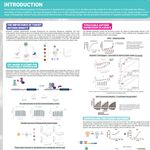
WEBINAR: Disruptive technologies for improving disease resistance in crop plants. So many genomes ...and so little time
-
Richard Michelmore, PhD Natural Sciences
Professor of Genetics in the Departments of Plant Sciences, Molecular & Cellular Biology, and Medical Microbiology and Immunology as well as the Director of the Genome CenterBIOGRAPHY
DATE: May 31, 2017
TIME: 9:00AM PDT, 12:00PM ET
Although more remains to be learnt, great advances have recently been made in the understanding of the molecular & genetic bases of disease resistance in plants. It is now time to deploy this knowledge to provide more durable disease resistance. Much of these advances have been enabled by improvements in analytical technologies. In particular, high throughput DNA sequencing enable detailed analysis of crop plants & their pathogens. It is now possible to characterize the resistance gene repertoires of plants & variability in pathogen populations. This information can be used as the foundation for rational deployment of resistance genes so as to maximize the evolutionary hurdle for pathogens to become virulent.
Much of our work over the past thirty years has focused on resistance to downy mildew in lettuce. Lettuce (Lactuca sativa) is one of the most valuable vegetable crops and downy mildew, caused by Bremia lactucae, is its most important foliar disease worldwide. The use of resistant varieties is the most effective method for controlling this disease; however, pathogen variability has led to rapid defeat of individual resistance genes. Over 50 resistance genes have been identified & lettuce downy mildew is one of the best genetically characterized plant diseases. Dovetail technology has provided chromosome scale assemblies of lettuce & parallel studies on B. lactucae are in progress. Whole genome sequencing of multiple genotypes has allowed the identification of candidate resistance genes in the host & virulence factors in the pathogen. Knowledge-driven deployment of effective resistance genes as gene pyramids provides the opportunity for more durable resistance to B. lactucae. Gene stacking using genome editing has the potential to make this process more efficient. In addition, host-induced gene silencing of vital pathogen genes presents potentially insurmountable evolutionary hurdles for the pathogen to overcome in order to become virulent.
Learning Objectives:
- Learn about the genetic basis for disease resistance in plants
- Discuss the value of a high quality reference genome in crop research and improvement
- Understand how genomics is speeding up crop breeding programs
WEBINAR: Disruptive technologies for improving disease resistance in crop plants. So many genomes ...and so little time
Please update your information
Certificate of Attendance
DOWNLOAD CERTIFICATE




